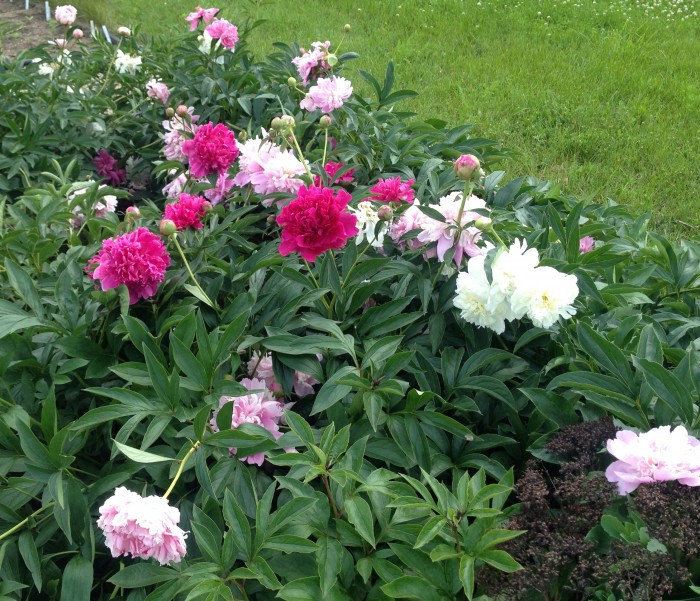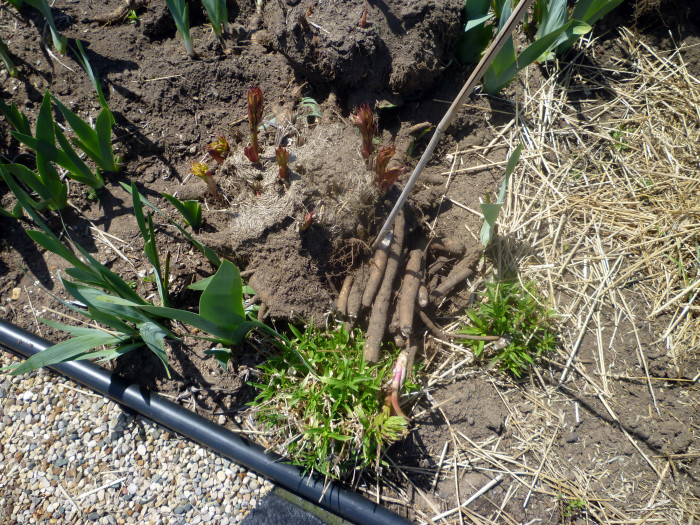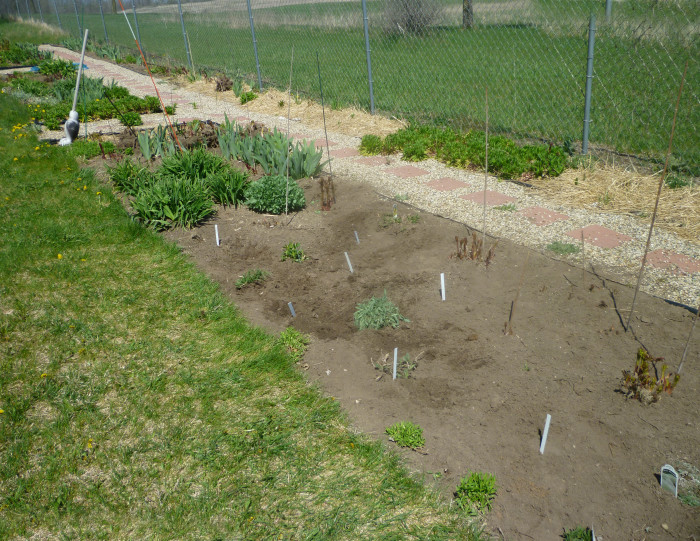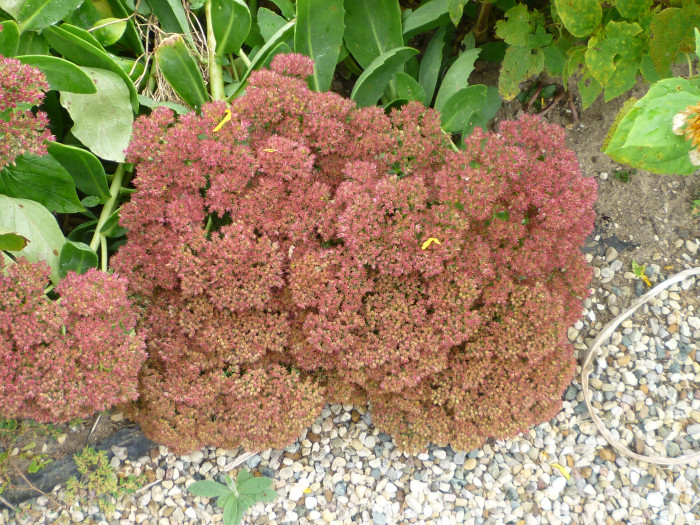It’s spring time, busy time, garden time. I love it! I’m getting about 10 new perennials next week (read about them here) and need to make the garden ready for flower power.
Main jobs: tidy up, weed, move a few plants to get color bursts and fertilize. Last fall I made a long list of all the plants that needed to move and carefully marked each phlox and daylily with the color and name. Ha! I used a Sharpie on white plastic garden stakes and they all faded. I’ve only my notes and memory to know whether this phlox is the pretty, late blooming pink or the disappointing mid summer white.
My perennial bed is divided in thirds, each about 20 feet by 5 or 6 feet (the design called for 6 feet, the most I can reach to weed, but two ended up 5 feet deep). The left third was easy. The Amsonia and Centrathus needed to move, one wimpy day lily needed to go, then add in Orange Perfection phlox and we’re done.
The right third was hard. It was full of peonies. And when I say peonies, these are full, big blooming plants, all moved from our old house, with roots that never end.
The bed is gorgeous in the spring, then blah in summer and fall with a flower here and there. I wanted to move the peonies more to the back and a bit closer, leaving space for asters and mums for fall, and have groups of daylilies, phlox, achillea, rudbeckia and gaillardia for summer.
I had 17 peonies and wanted to move 15. Well! These have enormous roots that break. I did not want to divide them as we would have needed another garden bed for the 30 or so children, so I dug huge holes and tried to plant with minimal root damage. This was one of the smaller clumps!
My garden plan was so nice but after struggling with the first 5 peonies I altered the design to leave as many peonies as possible without moving. Eventually 9 got moved and the other 8 got to stay. It took several hours of digging and struggling to get the plants positioned without breaking any more roots.
Here’s the right hand bed. The tall stakes mark peonies and the small white ones show where other plants will go.
You can see the peonies and daylilies are up, as are the pinks, silver artemesia, iris and a few phlox. Once everything was moved and the only open spots are marked for the new plants, it was time to fertilize. (Somehow it was time to lose my favorite trowel too. It is either buried under some peonies where it will stay until the end of time or it will show up someday.)
My favorite fertilizer is Rose and Floral from Cohoons Elevator in Midland. It’s great stuff, blended from composted cow manure with some inorganic nutrients blended in. I put a cup on all my perennials.
See the rounded mound of bright green foliage just under the red peony stems on the edge of the dirt half? That’s a sedum, a notorious fake beauty that lured me with pictures of luscious pink heads and left me looking at a bunch of pale wimpy pink nothing heads on an enormous floppy plant. I moved it to the wild section behind the fence where it can fight with the grass and tease the bunnies with its supposedly beautiful self.
Today I finished the left section, which leaves the middle. It has some beautiful daylilies and phlox, mums and Sweet Williams. It’s mostly OK except for the bunny ears that has spread to about 4 x 5 feet. I like bunny ears; the color is soft green and they feel so good. But any plant that’s this big needs to have a different spot unless it’s the most gorgeous flower alive. Bunny ears flowers are ugly so I will divide this and put pieces on either side of the fence.
Come back in a couple days for the before and after!





Leave a Reply